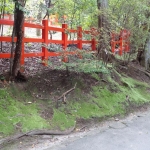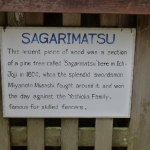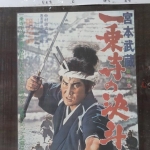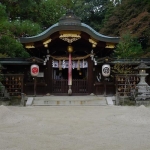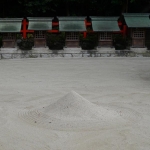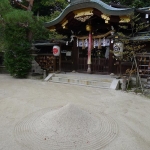Hachidai-jinja
This shrine was established in 1294 with “Susanohno-Mikoto” as the main deity. Known as “Northern Gion,” people pray here for happiness, success in business, studies and marriage.
Miyamoto Musashi, Japan’s greatest swordmaster is associated with this shrine.
Miyamoto Musashi was considered to be the greatest swordsman in Japan, and his legends live on today. Musashi was a practitioner of the two-sword fighting style, known as ‘Ni-Ten Ichi Ryu’, and he was also famous for his skill in throwing swords and even shuriken. Though many details about Musashi’s personal life are muddled and contradicting, through the famous book he wrote, The Book of Five Rings, and other accounts of his life, we can get a rough handhold on his adventures.
Musashi was a man of many talents, not only a swordsman, but also an architect, artist, sculptor, and calligrapher. His life is not unlike one out of a book of legends, and it is hard to believe that he actually existed. Musashi fought his first duel when he was thirteen and in his lifetime was said to have fought 60 duels undefeated, though this is a conservative approach which does not take into the account the battles he fought in. One of his most famous battles was a battle against the Yoshioka School. After defeating the head of the School, Yoshioka Seijuro, Seijuro’s successor, Denshichiro, challenged Musashi to a duel. After Musashi defeated him as well, this left the Yoshioka School with a twelve-year-old head, Matashichiro. Outraged, the Yoshioka School challenged Musashi to a duel outside Kyoto near Ichijo-temple, assembling an army of archers, musketeers, and swordsmen. Musashi ambushed this army and killed the young head, and to escape and fight off his enemies, drew his other sword to defend him-self. This was the birth of the Ni-Ten Ichi Ryu.
Musashi’s philosophy in swordsmanship, unlike many of his age, was not based on religion and aesthetics – that would come in later age – but more on grit experience. He says once, There are many ways: Confucianism, Buddhism, the ways of elegance, rice-planting, or dance; these things are not to be found in the way of the warrior. This can also be shown when he chose not to pray at Ichijo-ji temple before his battle against the Yoshioka School, as he considered it a weakness. He did not, however, dislike Shinto, as many believe, but merely believed that it had no connection to the way of the sword.
Musashi retired as a hermit in his later years and died a natural death in his sixties, but even his way of death was remarkable. At the moment of his death, he had himself raised up. He had his belt tightened and his wakizashi put in it. He seated himself with one knee vertically raised, holding the sword with his left hand and a cane in his right hand. He died in this posture, at the age of sixty-two. The principal vassals of Lord Hosokawa and the other officers gathered, and they painstakingly carried out the ceremony. Then they set up a tomb on Mount Iwato on the order of the lord.


